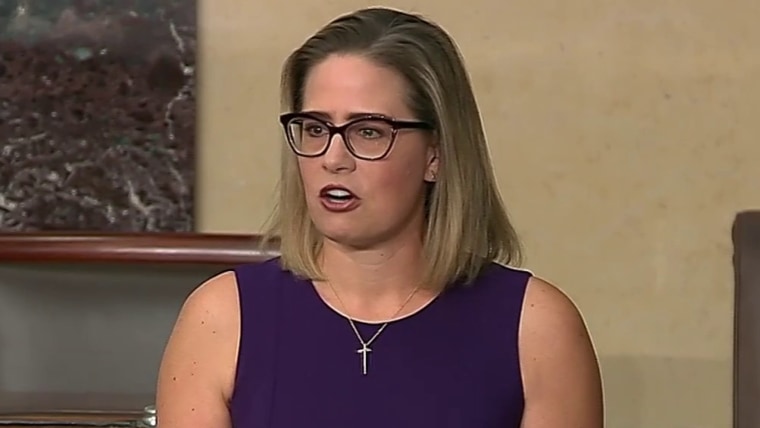Rep. Ruben Gallego, D-Ariz., officially launched his Senate campaign on Monday, vying to oust conservative independent Kyrsten Sinema, who left the Democratic Party late last year.
Sinema’s seat has seemed ripe for the picking for years, and Gallego is widely viewed as a formidable challenger.
Back in 2018, Sinema only narrowly defeated Republican nominee Martha McSally, who ran one of the worst campaigns in modern Arizona history, to win her first term in the Senate. The result was revealing, as it showed Sinema lacked a groundswell of support among Democrats. She may have been a preferable alternative to McSally — but many were skeptical of her intentions.
Ultimately, the liberal skeptics were right. During her four years in the Senate, Sinema has arguably accumulated more controversies than accomplishments. In an apparent effort to mold herself in the image of the late conservative Sen. John McCain, she menaced members of her own party by happily obstructing their agenda. This, she suggested, was all done in the name of bipartisanship, although there are some ulterior motives I’ll explain shortly.
But first, quickly, let’s go over some of Sinema's lowlights.
She made a show of her opposition to a federal minimum wage increase; she reportedly helped sabotage a plan that could have significantly lowered health care costs as part the bipartisan infrastructure bill; she seemingly hid in a bathroom stall to elude activists’ questions on some of her political views; she joined Republicans in obstructing voting rights legislation; and she publicly supported the filibuster, a tool historically used to block antiracist legislation.
Those last two points are particularly important to consider when discussing Sinema’s political calculus in tacking to the right and becoming an independent.

Remember what immigrant rights activists said to Sinema in 2021, as she fled into a bathroom stall to elude their questions about reneging on her support for migrants.
“We knocked on doors for you to get you elected,” one activist said. “And just how we got you elected, we can get you out of office if you don’t support what you promised us.”
They weren’t lying.
As I wrote in December, “Arizona is becoming more liberal, and its lurch to the left hasn’t been passive. It’s the product of people migrating from liberal states like Colorado, Washington, Illinois and California, and — importantly — progressive groups like LUCHA working hard to get Democrats like Sinema elected.”
Sinema’s behavior in office suggests she’s always known this is the case. Arizona is becoming more diverse and more liberal, so she's spent years essentially trying to game the system in her favor.
Her opposition to voting rights legislation, and her seeming ignorance of voter suppression measures in Arizona, help make the playing field much more suitable for conservative-leaning lawmakers like herself in the next election. As mentioned, at the federal level, she’s blocked voting rights legislation that sought to protect liberal-leaning constituencies from right-wing officials trying to undermine their votes. Meanwhile, her office hasn’t taken any steps to counteract the voter suppression measures Arizona conservatives have acted on in recent years — laws around ballot collection and voter identification that activists and election experts note tend to have a disproportionate impact on people who often vote for Democrats: particularly, Indigenous, Latino and Black voters.
Arizona has trended toward Democrats in recent elections. That potentially puts a moderate like Sinema in political danger. But the underhanded tactics she’s deployed in the past few years have given her a semblance of hope.
I advise taking obstructionist Senate Minority Leader Mitch McConnell, R-Ky., at his word when he touts Sinema as the "most effective first-term senator."
Indeed, she has been quite effective as a tool for conservatives to dismantle Democrats' agenda. And next year, as she angles for many conservatives' votes, she'll be looking for a payoff.

